(05.27.2025)
Commercial Street
Dimensions
5″ × 7.5″
Materials
Cover-weight paper stock; white colored pencil; black and blue thread; acid-free paper adhesive
unavailable / private collection
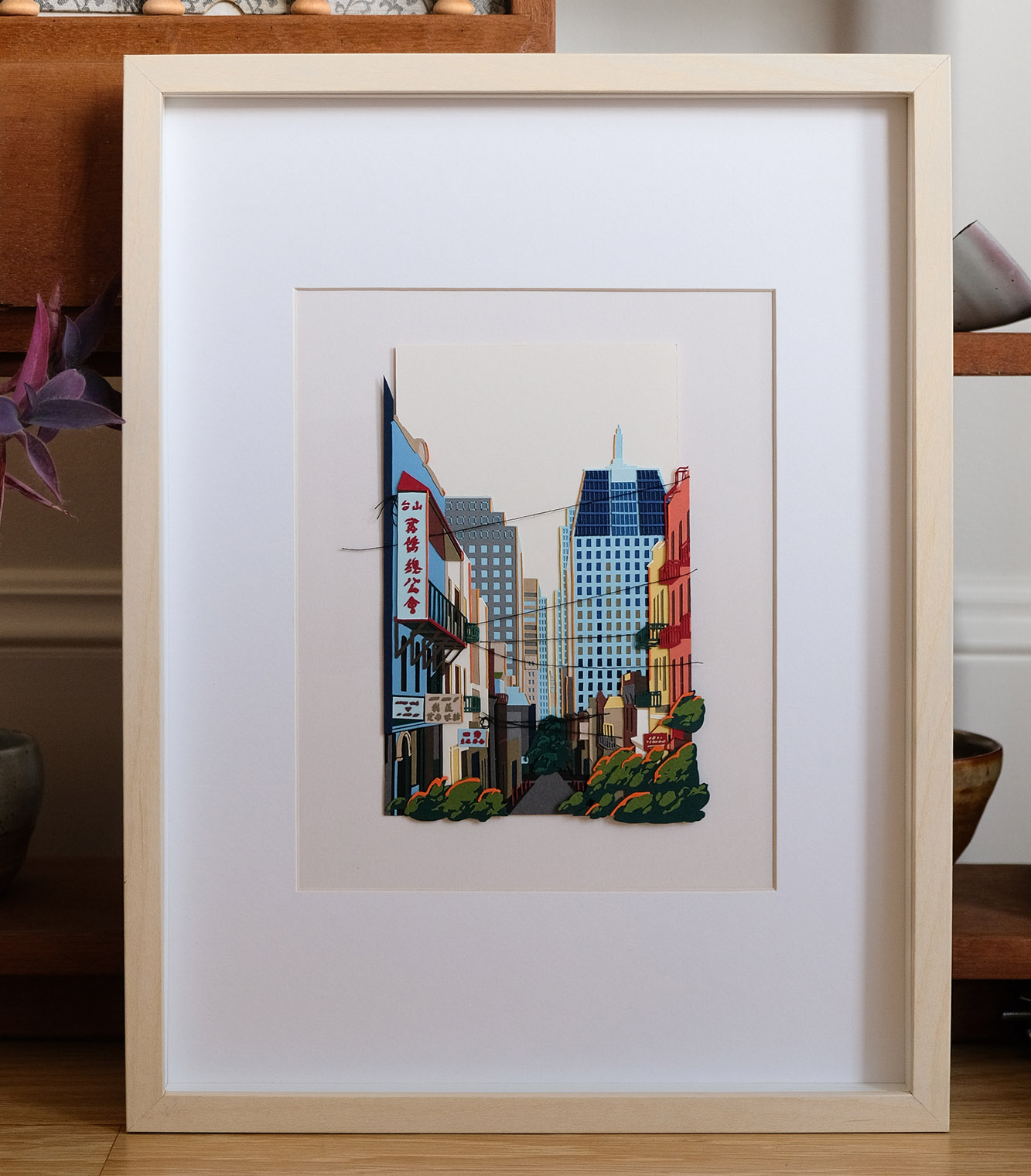
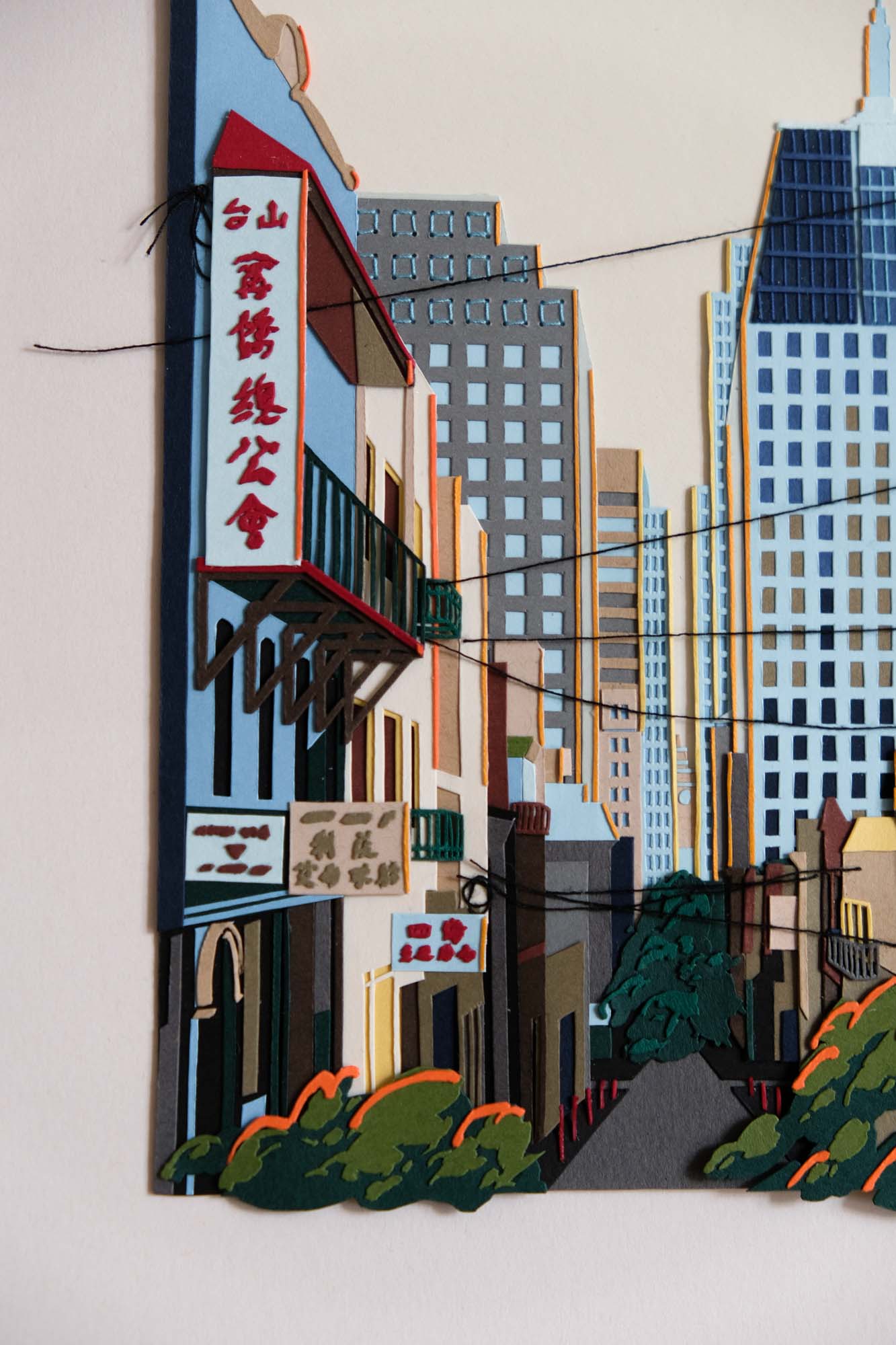
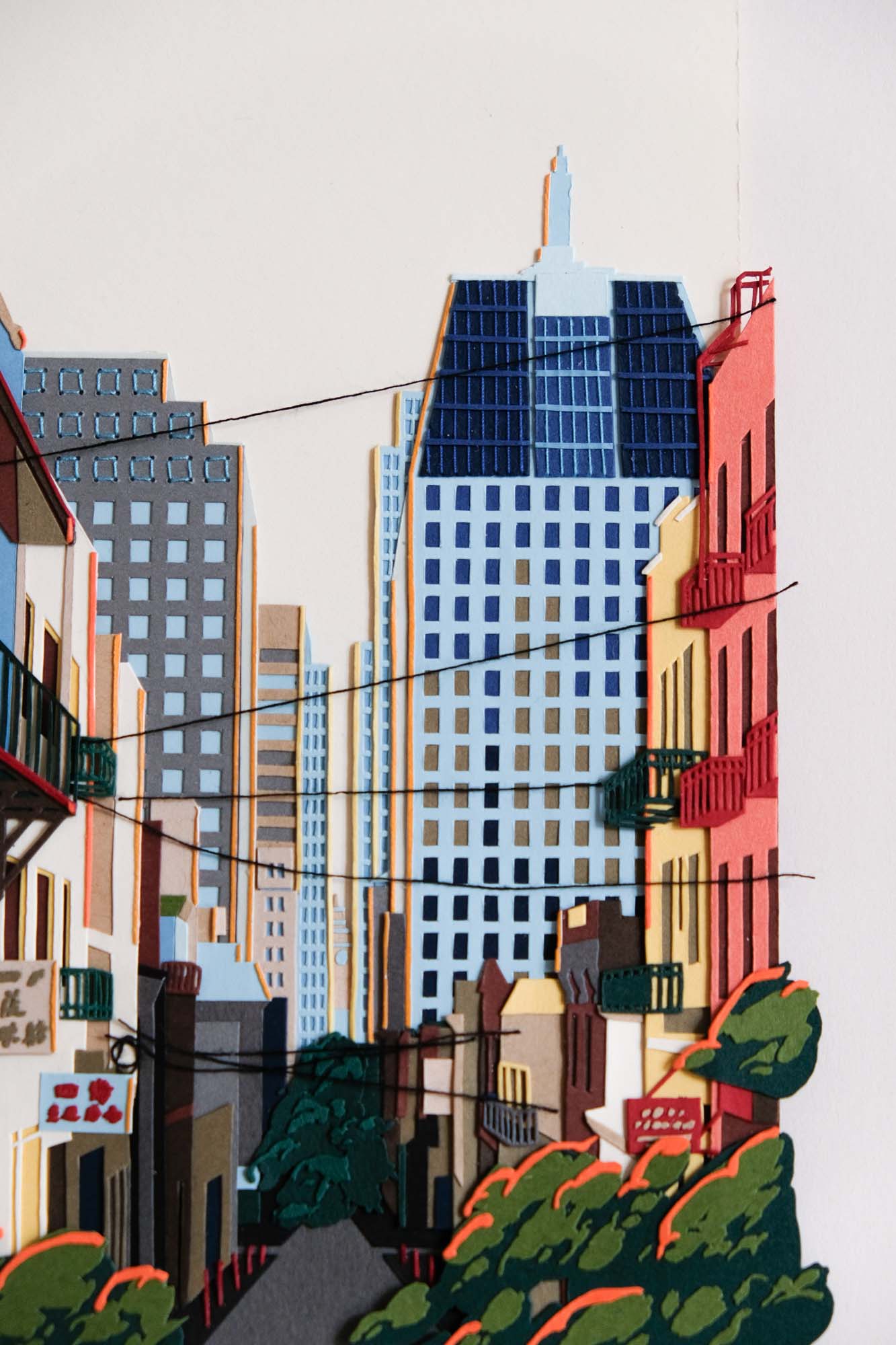
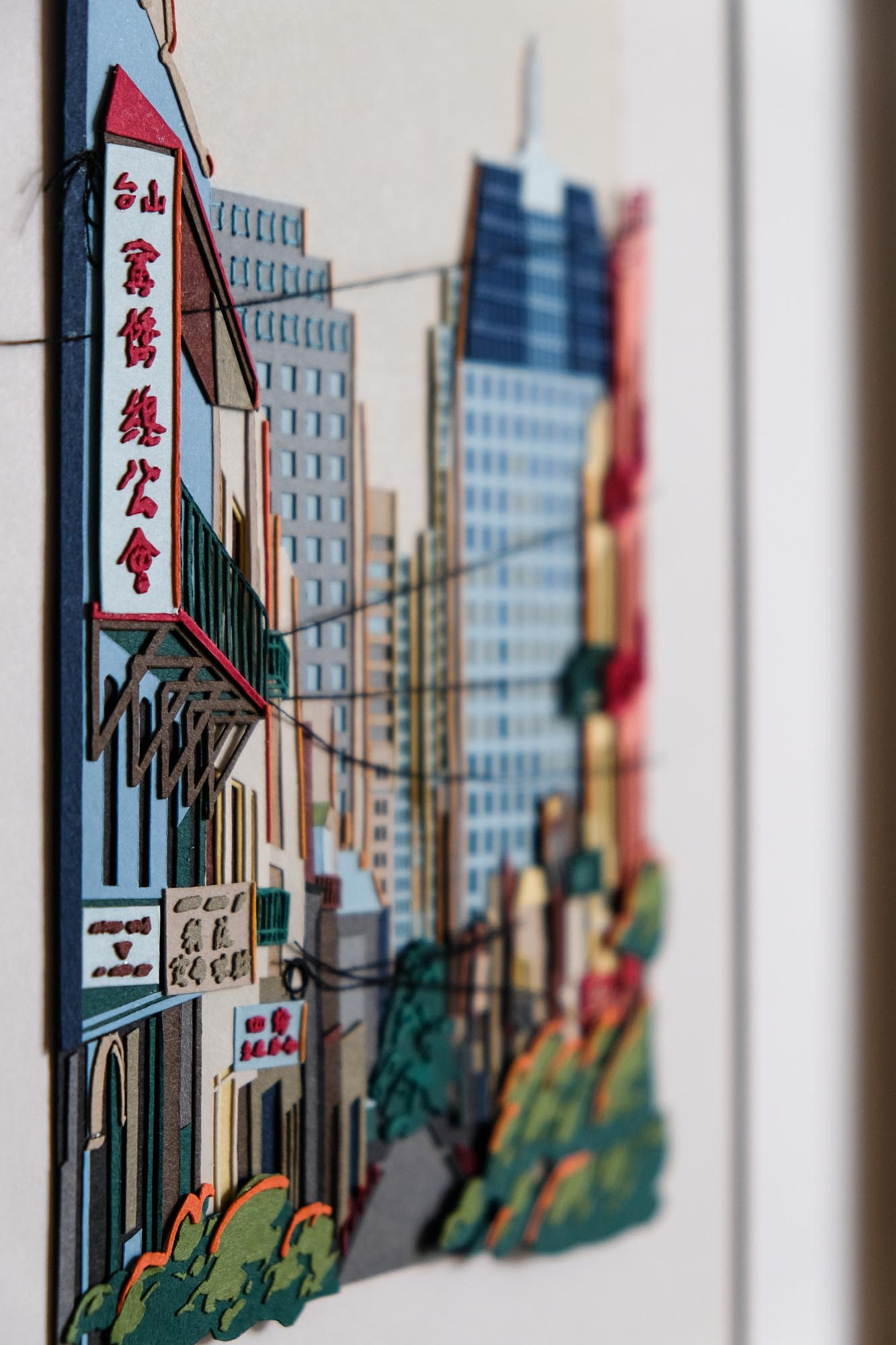
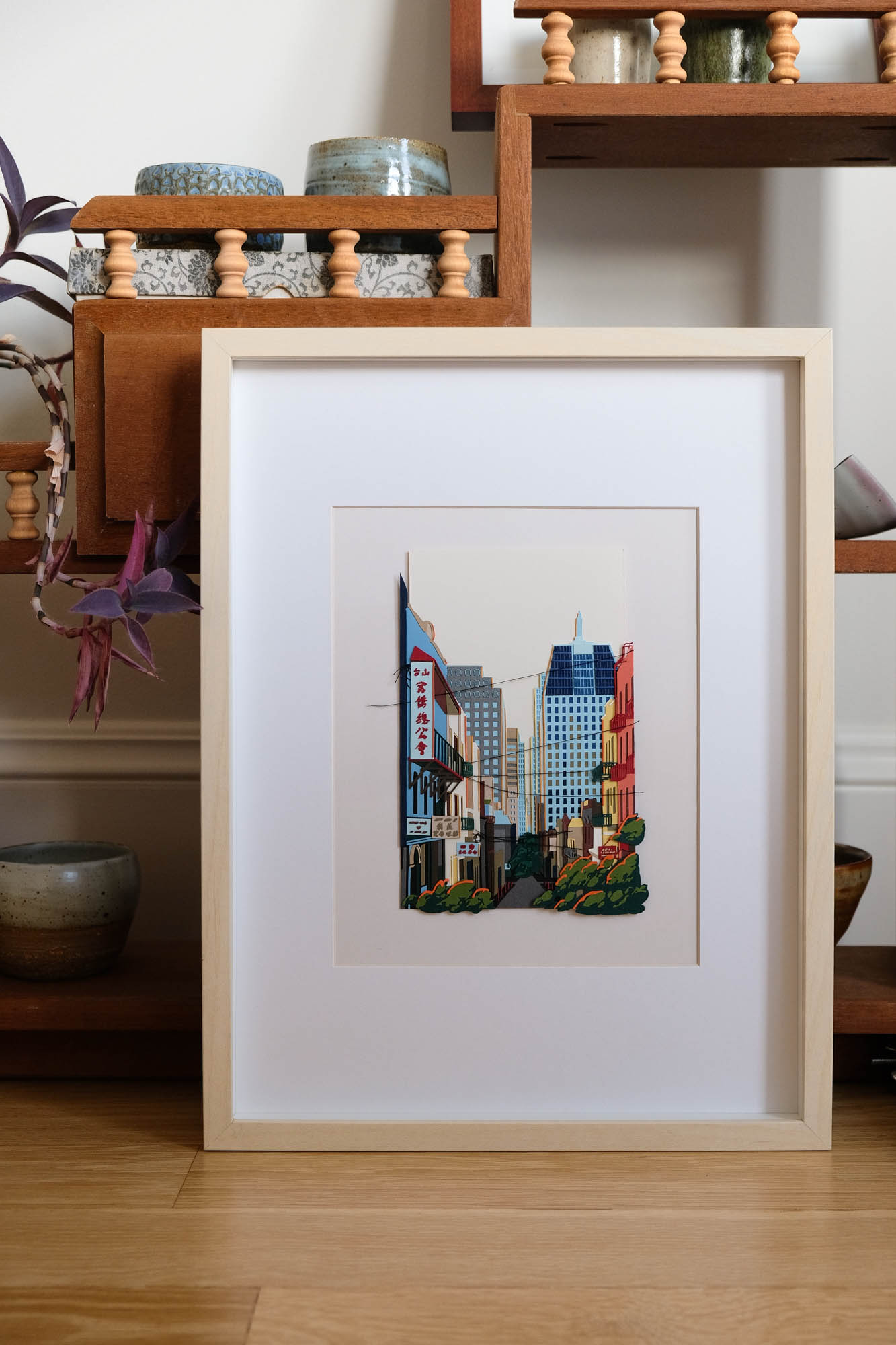
Growing up, San Francisco’s Chinatown felt like a distant place of wonder and excitement. It was filled with people who spoke my parents’ language and cooked the foods that my grandparents enjoyed. When the extended family gathered for celebrations, we came together during the sunset hour for banquet dinners—but only after my parents stopped by Stockton Street to pick up groceries amidst the crush of crowds in a riot of colorful clothing and plastic bags overflowing with fruits, greens, strange dried seafood, and pink bakery boxes. I remember my mom sometimes took early morning detours to buy cocktail buns and pineapple buns from the aunties behind the counters of those bakeries, before she started work on Van Ness Avenue. But I only visited Chinatown myself when daylight turned to evening, on those special occasions. The colorful tile walls, floating signs, and store facades turned dim as the sun disappeared. Once, there was a night market in Portsmouth Square, and my dad bought me a bracelet with black and white beads punctuated with jet black stars.
It wasn’t until I started my first job out of college that I discovered the authentic side of the neighborhood. I was an intern at a small design firm sitting on Commercial Street, a relatively petite street sitting at the border of two neighborhoods. At the end of my commute, I surfaced from the underground subway several blocks away and found myself dwarfed by the imposing buildings of the Financial District rising tall into the sky. The grand stone facades and gleaming reflections of glass and metal hid everything else from view. I followed the rivers of people rushing by in suits, oxfords, ties, briefcases, heels, jewelry, silver wristwatches…
When I reached Commercial Street, I turned left. And suddenly the view changed.
Commercial Street always felt like a haven to me. As a small one way road, the hectic rush of the Financial District often stayed away. The street had some large, pleasant trees in planters that caught the morning light. Walking west, Chinese signs began to appear. There was a dimsum restaurant, then a travel agency, and a fading billboard painted on a brick facade advertising a Chinese newspaper. On the next block—the last before the street ended—I think there was a benevolent association, another restaurant, a clothing store, a cultural center, and then a bakery at the far corner. I never quite knew what went on in most of these establishments. I wandered by almost every day during my lunchtime walks, but I was too shy to step inside and only got a glimpse through opened doorways. I remember a sense of peacefulness, like a slower pace of life from another time, wafting from those doorways into the street.
I saw two of my core identities reflected in that street. I was just getting started as a professional, learning to support myself financially, trying new experiences, testing the boundaries of my independence, trying to fit into the world of responsible adulthood. But I was also a Chinese girl finding comfort in her heritage. The more I ventured into Chinatown—especially after I moved into the city, when I walked its streets morning, noon, and evening—the more I learned to appreciate the traditions I had grown up with.
Several years later, my company moved to Oakland, and I lost my connection to the neighborhood. I came back to Commercial Street one weekend with a yearning to relive my earliest years in the city. I stepped off the bus to a sunny, peaceful morning. My camera sat in my hand as I headed south a few blocks on foot. I turned left, stopped, and took in the view.
It took another several years of revisiting this photo over and over before I finally had the courage to try capturing it with paper. And then it took several more months of drawing, debating over colors, revising sketches, and then starting over again after the first few pieces were cut. I confused myself a lot over the many layers of paper. Am I happy with the result? I’m not sure. But something about it conjures the peaceful familiarity from those days.